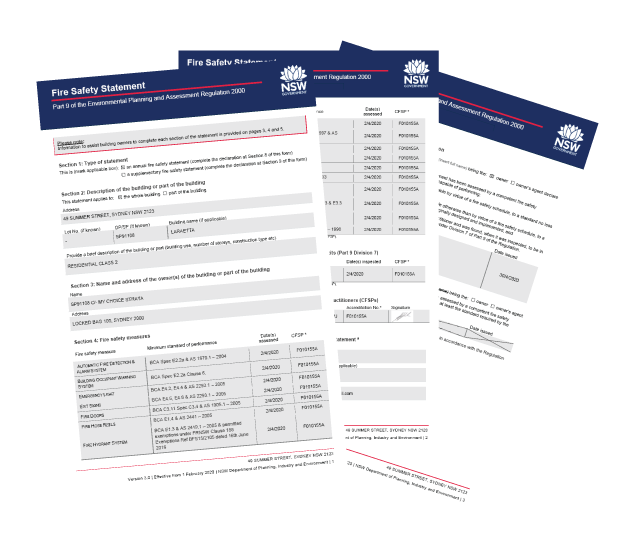Annual Fire Safety Statements – Do you have the right information?
In many jurisdictions, building owners are required to obtain an Annual Fire Safety Statement by undertaking annual fire safety inspections. The objective is to ensure the various fire safety systems retain their capability by being properly maintained and operational.
Problems can occur where key information is not available. For example, copies of the fire engineering reports (FER) used to justify non-standard fire safety measures.
Where buildings are designed and built in accordance with the standard BCA codes (known as Deemed to Satisfy) the assessment process is largely straightforward. However, for modern buildings, there is increasing use of non-standard or ‘performance-based solutions.
These performance-based solutions are prepared by specialist designers to provide a path for modernisation of older buildings or to facilitate more economic outcomes for new buildings. By example, a large bulky goods retail facility may not meet the maximum permitted travel distance to an exit. This may be due to floor size, shelving layout, and product displays. In this instance the ‘performance-based solution’ could specify enhancement of other fire safety measures (fire suppression, smoke control, etc) or impose on the owner increased inspections over and above the normal standards to ensure aisles and exits are clear and operational at all times.
Who can provide an Annual Fire Safety Statement?
 In NSW the annual fire safety assessment must be undertaken by an Accredited Practitioner (Fire Safety). The Assessor must check the schedule of fire safety measures provided by the original building certifier, this includes;
In NSW the annual fire safety assessment must be undertaken by an Accredited Practitioner (Fire Safety). The Assessor must check the schedule of fire safety measures provided by the original building certifier, this includes;
Fire Safety Reports
Fire Engineered Report
According to Accredited Practitioner (Fire Safety) Ian Childs from FIREASSESS® if there are no copies of the fire safety report available to justify non-standard or performance-based solutions then it can become a major problem. This is because the assessor is responsible to review the Fire Engineered Report (FER) and check that the fire safety measure performs to the original designed and implemented performance requirements. If no copy of the FER is available, then it can lead to delays in the issue of the annual fire safety statement and the added risks of penalties.
Ian also noted that obtaining a copy of the FER from the original consultant can be very problematic. Issues include the firm no longer exists, copies have been lost or archived and, in some instances, claims of copyright and confidentiality to preclude the author’s issue of the FER.
It is also recognised that incumbent service providers need to be able to refer to the FER to ensure that the systems maintained are capable of meeting FER performance requirements.
As Ian says, if only they included a copy of the FER in the Building Manuals for quick reference the whole problem is fixed.
In response to this issue, WebFM has been including critical design, fire engineering, and other regulated documents into our OmTrak manuals. Clients and Assessors like FIREASSESS® report few problems with sourcing these documents later for certification, audit, and also due diligence.
If you would like to learn more about the other critical information you should include in your next projects Building Manuals, then contact us at OmTrak.
